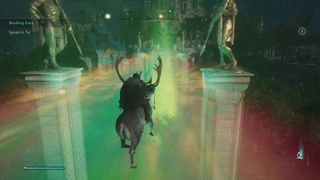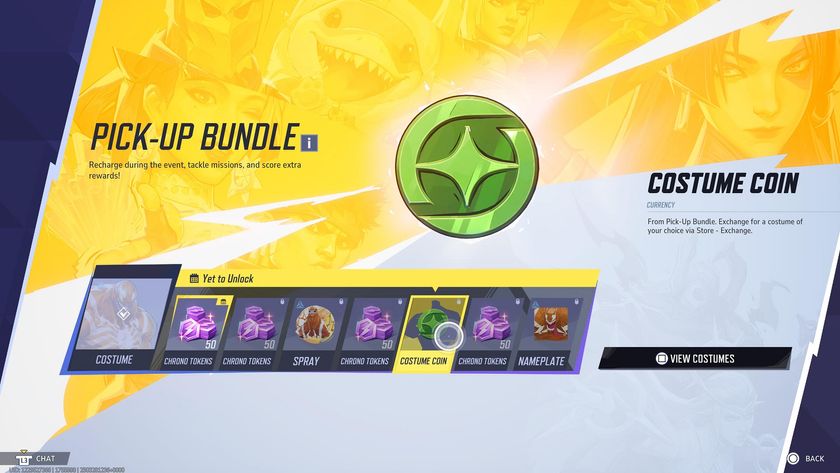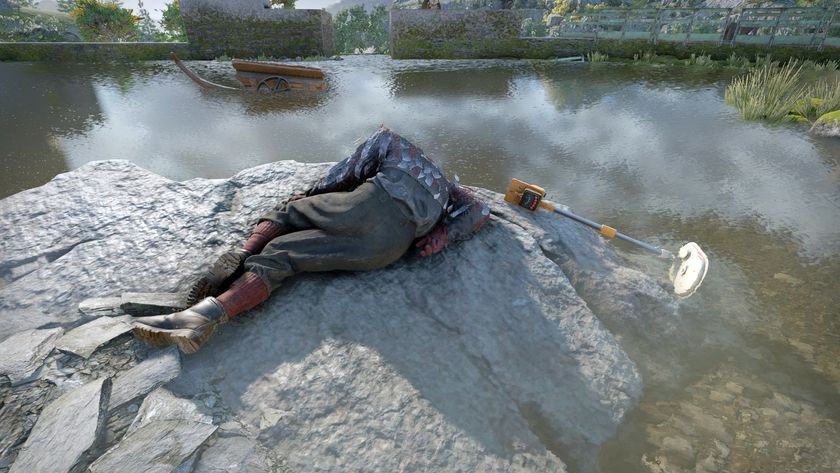Assassin's Creed Valhalla ending explained: How to get the "good" one
Breaking down that ending and the decisions for the best ending in Assassin's Creed Valhalla

This is an Assassin's Creed Valhalla endings guide so as you'd expect, there are spoilers aplenty from here on in. We'll say it again; stop reading here and click off the page if you haven't finished Assassin's Creed Valhalla yet or you don't want to spoil the various endings for yourself. There are two vastly different Assassin's Creed Valhalla endings and we've got the details on how to get both of them and what choices affect them.
Another spoiler warning. Do not scroll down any further if you do not want to read about the ending to Assassin's Creed Valhalla.
Whether Sigurd stays or leaves at the end of the main story is based on five decisions you make during the story. These are all about whether Sigurd thinks you’re good enough to be Jarl of Ravensthorpe, and he’ll tell you which of your decisions he is pleased with at the end of the game.
These are the big choices and the ones he’ll judge you on:
- Stealing Styrbjorn’s cargo
- Starting a relationship with Randvi while she is still with Sigurd
- Punching Basim when they have a fight
- Denying Dag his axe for entry to Valhalla
- Contradicting Sigurd in his judgement of the settlement inhabitants
Doing three or more of these will lead to Sigurd leaving for Norway but if you have only done one or two, you’ll be fine and he’ll stay in the settlement with you for good. Plus, he breaks up with Randvi so you’re free to be in a relationship with her. Win. But what about the rest of that ending? Let’s take a look.
Assassin’s Creed Valhalla ending explained

Right. So if you’re left with a massive question mark over your head after the Assassin’s Creed Valhalla ending, you’re not alone. The first question though, well, second after ‘WTF?!’, is whether you have also completed both the Asgard and Jotunheim stories. I can’t say it will make everything crystal clear but it does help everything make a lot more sense if you have finished all of the story. The spinning looms of the mythical Nornir have been hard at work on destinies in this one.
This ending breakdown is going to cover the events in both the main story ending and the hidden ending in the mythical arc, so if you haven’t been back to see Valka since you first encountered Asgard, it’s time to go back to your Seer’s hut and finish the whole story. We’d advise powering up first as the final boss fight is a bit of a beast. Literally.
It’s worth saying now that this is the most lore heavy Assassin’s Creed in a long time and, as such, comes with bushels of Apples of Eden and brings back the Isu - or Those Who Came Before - centre stage. Writer Darby McDevitt hasn’t held back on any of the more fantastical elements of the AC franchise, namely that the world keeps trying to end and the only way to attempt to stop it is to keep using the technology of an ancient alien race who once upon a time enslaved humans and still keep popping up in digital and now human form.

Odyssey’s DLC was very Isu heavy as Layla experienced Isu simulations of various mythical realms, but Valhalla brings all of this back into the central story. We’re even back with the old school crew of Shaun Hastings and Rebecca Crane like it’s 2012 all over again. In Valhalla we’re still playing as ex-Abstergo agent Layla Hassan, but things are a little different as she jumps in and out of her DNA based Animus.
Given that I don’t have much time to explain, the TL;DR version is that she has a mood tracker on because she killed her friend Victoria with the ultra powerful, not to mention regenerative Staff of Hermes Trismegistus. A lot like Desmond, who murdered Lucy back in Brotherhood in the same way...

I’m going to try and break down the ending one question at a time, and one quote keeps swimming around in my head. There’s a few vital notes in Layla’s laptop if you’re trying to make sense of all of this - one sentence, from one of the messages that Layla actually heard from a recording by the Isu Aletheia all the way back in Origins, says “There is a point where the difference between simulated and real is meaningless.” Think on this as we climb into the Animus for our Assassin's Creed Valhalla ending breakdown, as there are more questions than answers but these are my musings so far.
What was happening in Asgard and Jotunheim?

Good question. Glad you asked. While it initially seemed like Eivor was just dreaming of Asgard and Jotunheim after drinking Valka’s potions, the truth is a little more convoluted. She is actually travelling to a time before the Isu originally fell to the Toba Catastrophe but in a Norse skin, thus Eivor is an Isu called Havi - the ancient name for Odin - and planning for the inevitable Ragnarok via a solar flare. Eivor is experiencing a Norse version of actual history, which means that Isu we have seen before, such as Juno and Aletheia are here too, just represented in Norse form.
Just to make sure we know we are in a version of reality, we even hear the voice of Ezio Auditore coming through a broken mirror as members of the Isu send him messages in the future. Confession - I had to watch the cutscene back as at the time I didn’t even realise it was him, but it’s very clearly Ezio asking ‘Who are you?’ after Gunlodr tells Odin (Eivor) what she has been doing. This Norse version of the Isu sees Odin, Tyr and co. drinking magical mead, in order to stay alive and be reincarnated through the centuries after their inevitable destruction at Ragnarok.

There are a few key indicators to make sure we know this is a version of an Isu reality. Hyrrokin explains that she, the Jotunheim King Suttingr and Gunlodr ruled together as Father, Mother and the Sacred Voice. This description of the Isu having the same rulers can be found in a file on Layla’s laptop, where she also talks about the six attempted preventions of Ragnarok, identical to that of the Isu. I was confused as to whether Hyrrokin or Gunlodr is the representation of Juno here, but given that Hyrrokin talks about mixing her husband’s ashes with her side of the mead, it would make sense that she is Juno and is therefore is creating The Sages who will occur through history.

The magical drink that Odin and Tyr use to survive the end of their world is Norse skin for Isu tech and in a Codex entry for the Jotunheim King Suttingr, Shaun Hastings notes that the mead seems “a metaphor for something else.” It’s not clear what this actually is, but it means that Eivor is actually a descendant, if not the full reincarnation of the Isu Odin centuries down the line.
This makes sense given Eivor’s struggle and boss fight with the one-eyed god at the end of the story, as she has literally been fighting with her own destiny. He is the demon on her shoulder as she destroys the Order of the Ancients, and he has been the one to whisper dark thoughts in her ear as she decides on pivotal moments in the story. Eivor as an Isu makes a lot of sense and very much explains her very useful Odin’s Sight. But...
Then who is Sigurd?

Well, Sigurd is also an Isu. In Eivor’s Norse version of reality, he is the Isu known as Tyr, the Norse God of War, so all that talk of him being a god by the evil Order of the Ancients member Fulke was actually spot on. As we saw at the end of Jotunheim, Tyr too loses his arm, further reinforcing the destiny of Sigurd and how the threads of these stories are forced to repeat.
Sigurd is the one who leads Eivor into the Isu vault deep underground in Norway, after remembering the language of the Isu. He even says that his visions “are memories of a life once lived,” and shows Eivor the Apple of Eden that powers the shrine. His knowledge was ‘unlocked’ by Fulke torturing him, letting him see his own potential and ‘remembering’ his true role. His ‘Valhalla’ - last quote marks, I promise - is a gold-hued universe that Sigurd wills into existence when he and Eivor plug into the extremely pointy looking system deep below the ground.

This land of endless slaughter and mead is his version of paradise but as Eivor discovers, it’s not the perfect heaven that they both need. Her father might be there but he is just a creation, a simulated version of Eivor’s reality. After she decides to leave and convinces Sigurd, this is when she faces Odin who says she isn’t allowed to leave the simulation.
After she beats Odin, embraced by her family and friends, Eivor abandons the god. “With me you have wisdom and power,” he howls. “What more do you need?” She replies, “Everything else,” cementing her position in the human world and not the Isu simulation with him. Eivor and Sigurd’s escape brings them back to the real world, where things don’t get much better when Basim shows up.
Who is Basim and is he bad?

In short, probably... Despite revealing a sad past to Eivor around a camp fire earlier in the main story, it turns out that the Hidden One Basim wants Sigurd and Eivor dead. His campfire story wasn’t from the reality of the 9th century, it was from the eons before when they were Isu. It transpires that Basim is the reincarnation of Loki in Eivor’s Norse Isu past, meaning that he wants his fellow Isu dead in revenge for their treatment of his son.
“You widowed my destiny, Wolf-Kissed,” the Isu reincarnation says. “You broke all my hopes.” It turns out that the son Basim was talking about, was the wolf son of Loki in Eivor’s Norse Isu history. Odin and Tyr bound the wolf in the past, and Basim as a reincarnation of Loki is back to get revenge - he even delights at the wolf scars on 9th century Eivor’s neck. Interestingly, Odin specifically said in the ending of the Asgard arc that Loki wouldn’t get any of the useful reincarnation ‘mead,’ but it could be that Loki procured his from elsewhere.
Unfortunately, while beating Basim and plugging him into the Isu simulation system seems like a great idea, it turns out that Eivor has only pressed pause on Basim rather than killed him. Sigurd says that Basim lives but “in darkness,” where he waits for Layla to arrive more than a thousand years later.
What has happened to Layla and was that Desmond?

Meanwhile, in the modern day element, Layla’s trip into the Norwegian vault plugs her into the same simulation. Here, the Norse weavers continue to work away on the looms of destiny, in a shadow of the now broken Valhalla. Basim exists in the simulation, and he is the one who sent the message through the internet. From inside the underground Isu vault , his consciousness sent the Assassins the voice message saying to look into the memories of Eivor.
Basim says he has been working with who he calls The Reader, and who we call Desmond, in order to prevent yet another catastrophe like the one that Desmond prevented in 2012. Interestingly, the Norse loom weavers disappear the minute Layla touches an Apple of Eden and Basim disappears, meaning that their job is done. Layla, as the so-called ‘Heir of Memories,’ was always meant to reach this place.

And then there’s The Reader. We’d recognise Nolan North’s voice anywhere, and that’s Desmond Miles as a white silhouette who has been working out all the possible futures of the world. Makes no less sense than Loki, eh? He never says that he is Desmond, but The Reader is trying to work out how to save the world with a series of calculations. Within a tree, all the data in the universe can be used to work out a way to slow the end of the world. Layla suggests looking at the alternate realities from back in 2012, in a reality where Desmond didn’t save the world to see if humans worked out a way to survive. Layla stays with The Reader in the simulation when she is told that her human body has no chance, meaning we’re definitely not going to be playing as her again. So long and thanks for the DNA-based memories, Layla...
What’s going to happen now that Basim is out in the world?

This much is unclear. While Basim has managed to heal himself with the staff, he is still an Isu. In fact, he speaks to Aletheia inside the staff (who he calls ‘my love’) and says that the Heir of Memories performed her task perfectly. Layla was apparently always destined to die in the vault, bringing him the staff of power and Aletheia, and letting him out into the universe. An Isu has a new body and a staff of ultimate power. Oops. That’s the next ten years of Assassin’s Creed organised…
Whether we’ll see Layla and The Reader again is unclear but Rebecca, Shaun and Basim are clearly our modern day protagonists for the foreseeable. Basim’s first request is to meet Desmond’s dad William, the head of the Assassins, and who knows what his true purpose is. Desmond’s dad being picked off by Loki in the opener of next year’s Creed anyone? We might not even have to wait very long, given the amount of Valhalla DLC on the way. Nothing is true after all...
Have you found all of the Assassin's Creed Valhalla legendary animals yet? If not then check out our guide and the video below.
Sign up to the 12DOVE Newsletter
Weekly digests, tales from the communities you love, and more
Louise Blain is a journalist and broadcaster specialising in gaming, technology, and entertainment. She is the presenter of BBC Radio 3’s monthly Sound of Gaming show and has a weekly consumer tech slot on BBC Radio Scotland. She can also be found on BBC Radio 4, BBC Five Live, Netflix UK's YouTube Channel, and on The Evolution of Horror podcast. As well as her work on GamesRadar, Louise writes for NME, T3, and TechRadar. When she’s not working, you can probably find her watching horror movies or playing an Assassin’s Creed game and getting distracted by Photo Mode.

Assassin's Creed Shadows devs "actively looking at" an even harder difficulty mode for the RPG: "How challenging do you want it?"

Assassin's Creed Shadows' delays were mostly used to polish the RPG, creative director confirms, not for deeper changes brought about by Star Wars Outlaws reaction











